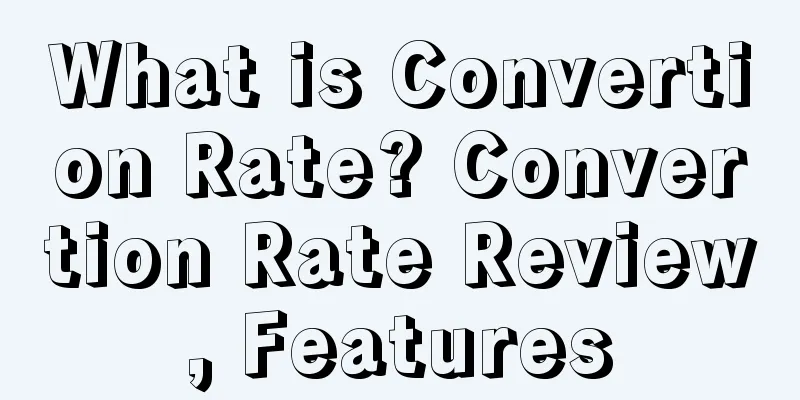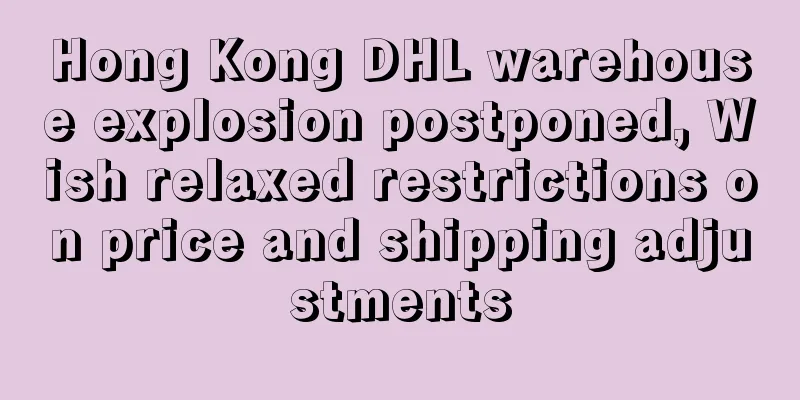What is Convertion Rate? Convertion Rate Review, Features

|
Conversion rate is the ratio of the number of completed conversion behaviors to the total number of clicks on promotional information within a statistical period. The calculation formula is: Conversion rate = (Number of conversions/Number of clicks) × 100%. This mainly refers to the conversion rate of Amazon ads. It is the ratio of the number of people who visit the store and make purchases to the number of people who visit the store. The calculation method is: Conversion rate = (Number of customers who make purchases/Total number of people who visit the store) × 100%.
Algorithms and meaning Merchant profit = sales x net profit margin = (number of buyers x average order value) x net profit margin = Number of people entering the store X Purchase conversion rate X Average customer spending X Net profit margin =Ad impression x ad conversion rate x purchase conversion rate x customer unit price x net profit margin = Promotion display x promotion conversion rate x purchase conversion rate x customer unit price x net profit margin =Search impression x search conversion rate x purchase conversion rate x customer unit price x net profit margin =*****X***** conversion rate X purchase conversion rate X customer unit price X net profit margin Conversion rate is the probability that a buyer clicks in to view a product and then purchases it. It is the core factor in organic search ranking and advertising search ranking. After a click occurs, the product details page determines whether the buyer will purchase the product. Therefore, when the conversion rate is not ideal, we still need to consider whether the product is optimized. No conversion rate means no sales, and the advertisement is meaningless. There are various conversion rates in the Amazon promotion process. This allows us to know the steps of conversion. For example, when a merchant advertises on Amazon to guide traffic, we need to know how many times the ad will be displayed, and then the ad click rate is the conversion to the store. Then, whether this group of people will buy or not is uncertain, which will generate a purchase conversion rate... So this is all information on Amazon's conversion rate chain. Conversion rate optimization strategies can help conversion students find growth points for conversions and maximize the impact of every penny spent on PPC (pay-per-click advertising).
Solutions for low conversion rates 1. Provide complete product content: Complete and descriptive product content can give buyers sufficient information when making decisions. 2. Use promotional activities: Promotional activities are very attractive to buyers. Use promotional activities such as [free delivery] to increase conversion rate. 3. Provide clear and high-quality pictures : High-resolution pictures with clear details can stimulate buyers' imagination and trigger their desire to buy products. In addition, please provide as many different pictures as possible. Many product categories allow sample pictures and backup pictures. Please evaluate the quality of pictures according to the following guidelines: the picture matches the product description in terms of size, color, etc.; the product can be identified in the picture; the picture is a photograph, not a painting; the angle of the picture highlights the advantages of the product; the product is in focus and the lighting effect is excellent; the close-up picture is not obscured by highlights or shadows; the product occupies at least 80% of the picture; the picture depicts the complete product; the background is simple and clear and does not interfere with the product itself. 4. Excellent product features and descriptions: When describing your product, list key features and benefits in bullet points. A well-written product description can help buyers imagine the experience of owning or using your product. Including information about the experience, use, and various benefits of the product can help trigger buyers' desire to buy. Testing shows that well-written product bullet points can increase sales. Buyers rely on product bullet points to understand important product features because these bullet points can highlight important or special information about the product. When describing your product, you may need to introduce some important features in the product bullet points. However, please do not just provide a simple description that is concise and to the point. Put yourself in the buyer's shoes: what do they want to feel, touch, think, and get? Providing information about the experience, use, and benefits of the product can stimulate the buyer's imagination. Product descriptions can provide a shopping experience that is as close to a physical store as possible. 5. Competitors’ offers: Understand the number of competitors and their product sizes, selections, pricing and promotions in order to plan an attractive and competitive offer. Compare their prices with similar products sold on the website. 6. Encourage buyers to review products: Buyer product reviews are helpful to improve conversion rate because buyers value other buyers’ opinions. When you solicit feedback from buyers, you can ask them to provide product reviews. 7. Product on-page optimization: Here we need to check whether the pictures on our detail pages are clearly expressed, whether the selling points are explained clearly, whether the descriptions are well done, and the titles, etc., to optimize the quality of our listings. For example, check whether the styles of the main and auxiliary pictures are consistent, just like the uniforms of formal companies are uniform, which can reflect whether a company is formal and rigorous; the description should be clear and organized, remember to use spaces to break lines, do not pile up a bunch of words there, and the description should not be too long. 8. Match core keywords: Sellers who come in through advertisements have certain needs. If you open the product details page and find that this thing is not what you want, if the conversion rate is low, we need to think about whether the listing does not match the core keywords. 9. Review: Check whether the product listing has fewer top reviewers and whether the product reviews are good. Review is also very important. 10. Learn from other similar products: Search keywords, find your ad, and look at the products, prices and other attributes around your ad. In natural search, find products with the same appearance as your product, or products with the same model. Then observe the sales changes of the products before and after yours. |
<<: What is Santong Supply Chain? Santong Supply Chain Review, Features
>>: What is Conversion Rate? Conversion Rate Review, Features
Recommend
A large number of sellers regret following the trend and joining the new platform!
Jumping from one pit to another ... The anxiety o...
The second-hand market in the United States is developing rapidly, and second-hand furniture is popular
According to foreign media reports, the online se...
With a five-fold annual growth rate and revenue of $60 million, Bookshop.org is catching up with Amazon
According to foreign media reports, the online bo...
Monthly sales reached 198,000, and the European electric vehicle market ushered in spring
Affected by the epidemic, residents' travel f...
AliExpress’ 828 promotion was a huge success, and Latin American overseas warehouses were sold out!
The Latin American market is becoming a new hot s...
What is targetTap? targetTap Review, Features
Founded in 2020, targetTap by CrazyBee is a New Yo...
Amazon US Station New Email Features Are Here
Recently, Amazon US released a new announcement, ...
Relying on marketing to get out of the circle, selling well and restarting IPO
In 2024, SKG, which hired top celebrities as its ...
Square acquires AfterPay for $29 billion to provide sellers with a “buy now, pay later” option
Mobile payments company Square will acquire Austr...
During inflation, low-price retailers attract more buyers
U.S. consumer confidence fell more than expected ...
Profit Bandit
Profit Bandit is a product research tool for iOS ...
What is Nulaxy? Nulaxy Review, Features
Nulaxy was established in 2015 as a professional ...
What is Cashfree Payments? Cashfree Payments Review, Features
<span data-docs-delta="[[20,{"gallery"...
What is FactoryMarket? FactoryMarket Review, Features
FactoryMarket is a new shopping platform that com...
What is Uala? Uala Review, Features
<span data-docs-delta="[[20,{"gallery"...









